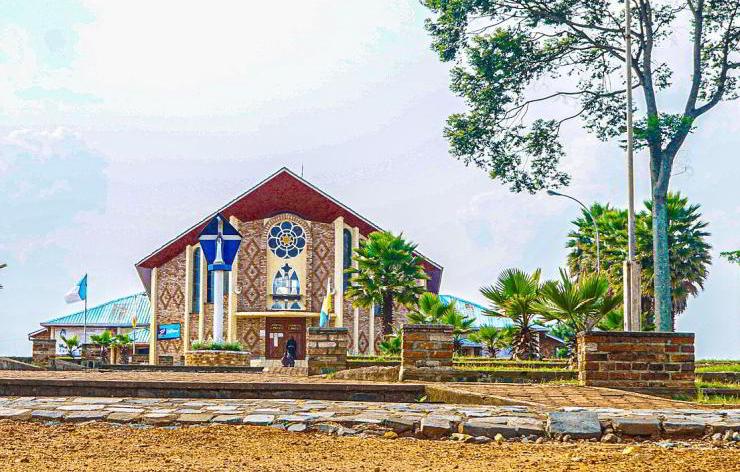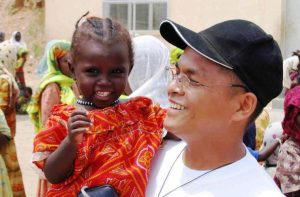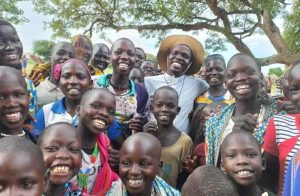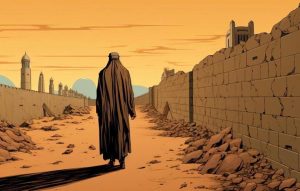Nestled in the charming hills of the southern part of Rwanda, we find the only approved Marian apparition site in Africa, ‘’Our Lady of Kibeho’’.
Kibeho, meaning ‘’let it be’’ in the Kinyarwanda language, is a small parish in Gikongoro Diocese. Kibeho parish was founded in 1934 in the Nyaruguru district and is dedicated to Mary, Mother of God. Though the village has been known nationally for its poverty-stricken state, it has always been credited for its prevalent strong catholic faith and its enormous contribution towards vocations to priesthood and consecrated life in Rwanda.
Although Rwanda is widely known for its beauty, as evidenced by its nickname ‘The Land of a Thousand Hills’, it is also famous for hosting ‘Nyina wa Jambo’ or ‘Mother of the Word’ and the Kibeho Apparitions, which took place in the 1980s.
The apparitions began on 28 November 1981 with the first visionary, Alphonsine Mumureke, a student at Kibeho High School. She was filling water glasses in the canteen, a daily practice, when she heard a soft, sweet voice calling her ‘Mwana‘ (child).
Falling to her knees, she asked who was speaking and the Lady replied, “I am the Mother of the Word”. Several more apparitions followed, arousing suspicion among the students, who thought that Alphonsine was mentally ill or possessed by demons.
The growing excitement led Alphonsine to ask Our Lady if she could appear to other girls so that they would also believe. The Blessed Mother responded by appearing to Anathalie Mukamazimpaka, the second seer, on 12 January 1982. Several other apparitions followed, including one on 6 July 1982, during which the Blessed Mother said “My child, pray hard for the world because it is falling into a dark and bottomless pit… I give you this mission to collaborate with Me and save these fallen people”.
Some students were not happy with these events. Marie-Claire Mukangango, who later became the third seer, confronted the seers and attacked them verbally and finally physically. She was about to be expelled from the school for her bad behaviour. However, she was considered by the Virgin Mary to be ”beloved of the Blessed Mother”.
On 1 March 1982, Marie-Claire fainted and the next day she heard a gentle voice telling her not to be afraid. On 31 May, Our Lady appeared to her again, holding a black rosary called the Rosary of the Seven Sorrows. Our Lady added: “What I want you to do is to ask for forgiveness. If you recite this rosary in meditation, you’ll find within yourself the strength to return to God. Today, people do not know how to ask for forgiveness. They continue to crucify the Son of God”.
Marie-Claire asked, “Mother, do you want me to teach the Seven to the whole world?” On 15 August 1982, the Feast of the Assumption, the visionaries experienced a public and communal apparition, considered the longest of all, as it lasted for hours. The news had already spread beyond Rwanda’s borders, and pilgrims were making their way to Kibeho, looking for miracles and hoping to be healed.
But the joy turned to sorrow when the visionaries saw Our Lady weeping. They too began to weep and scream as they saw people being beheaded and rivers flowing with blood. This was to become the Rwandan genocide of 1994.
A decade after the first apparition, in September 1990, the first and only papal visit to Rwanda was made by Pope John Paul II. Eleven years after that visit, in 2001, the messages and apparitions of the Blessed Virgin Mary (BVM) in Kibeho were formally recognised by Pope John Paul II in a letter read by Bishop Misago, cementing Kibeho’s importance in the Catholic community of Rwanda and Africa as a whole.
On the 25th anniversary of the first apparition, in November 2006, Pope Benedict XVI granted a plenary indulgence to pilgrims who visited Kibeho during the Jubilee Year.
On 4 April 2014, during the ad limina visit of the Rwandan Episcopal Conference to Rome, Pope Francis commended them to the maternal protection of the Virgin Mary, adding: ”I sincerely hope that the shrine of Kibeho will radiate even more of Mary’s love for her children, especially the poorest and most wounded, and will be for the Church in Rwanda and beyond a call to turn with confidence to Our Lady of Sorrows, who accompanies each of us on our journey, and to receive the gift of reconciliation and peace.”
Today, the Kibeho apparition site attracts thousands of pilgrims from Rwanda and neighbouring countries such as Uganda, Kenya, Tanzania, Burundi and Congo, as well as worldwide. The most celebrated day is the annual feast of Our Lady of Kibeho, celebrated every year on 28 November, followed by the Solemnity of the Assumption of the Blessed Virgen Mary. (Martha Ruth Kayaga). (The Sanctuary of Our Lady of Kibeho.CC BY-SA 4.0Bintu utuje)









